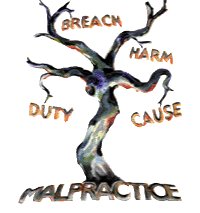
Image found on Wikipedia: Hopf Fibration and released into the public domain by its author, Davidarichter
I’ve stayed away from this blog for the past 2 days or so. I’ve been reading a crime novel, making a necklace, playing with my dog, doing suduko, unpacking and organizing, facebooking, and tweeting – basically keeping my mind superficially busy so that it could be free to work away on some issues in the background.
The reflection was triggered by comments on my last post.
I teach, learn, and live with digital technologies. I do think it important to pass on skills and knowledge regarding these technologies to my students and colleagues. So, why am I unsettled?
On Monday,Keith Gessen mused,
Nice thing we’ve got going here, this “pro-internet,” “anti-internet” debate.
(go read his post to see what he was going on about).
And as I read his post it made me think that this has all become a debate – a this vs. that – and it’s so not about that. It is, however, a resistance to the growing feeling I have that ‘digital literacy’ (see bottom of post for more on that) is becoming confused with the goal.
I teach, learn, and live with digital technologies, among other technologies, because I have found them to help me in my goal mission – YES MISSION – to help kids learn…
…that kindness is a trait to be valued.
…that making hateful comments like these ones have repercussions that go deep into our souls.
…that accountability and responsibility for one’s actions is heavy heavy….but, heavy.
…how to seek and find the positive in life.
…that they can find their highest selves
…that they can help others to find their highest selves too
…what it is to be a part of a community
And I can’t forget
…that they need to hang on to a sense of humour.
Ease with technology needs to be could be (depending on our immediate needs ;) ) integrated into our learning selves, but it isn’t THE goal.
Tracy.
~~~~~~
A virtual high five goes out to these posts I read earlier today:
Learning, Motivation, and Technology by Steve Ransom
Motoko by Keith Gessen
Resources for Community Managers by Connie Bensen
Workplace Literacy by Ken Allen
.
.
.
.
.
.
.
.
.
ps – The term ‘digital literacy’ is starting to creep me out. I laughed OUT LOUD when I read Doug Belshaw’s tweet this morning. It was a good one:
Go back to where you were
 Yup, we definitely need to continue re-thinking learning and assessment.
Yup, we definitely need to continue re-thinking learning and assessment.




